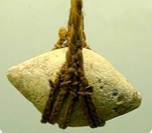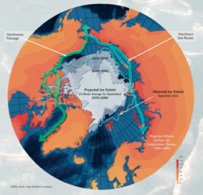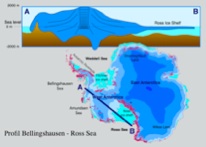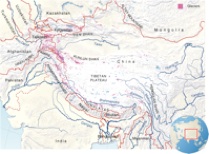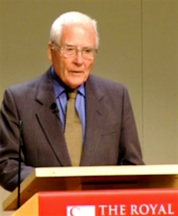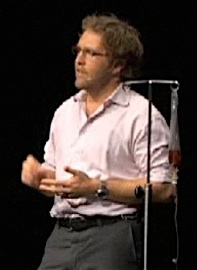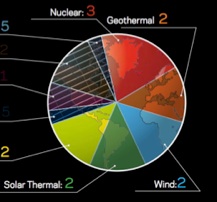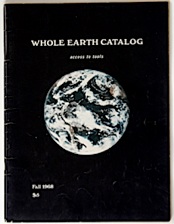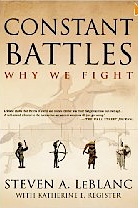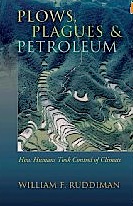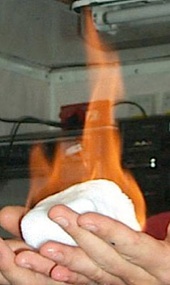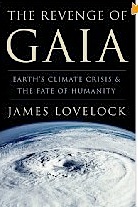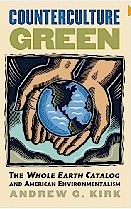1.
Scale, Scope, Stakes, Speed
We are as gods and HAVE to get good at it.
—Whole Earth Discipline

Activist Bill McKibben recently noted: “The environmental movement has morphed steadily into the climate change movement.” That means that Greens are no longer strictly the defenders of natural systems against the incursions of civilization; now they’re the defenders of civilization as well. It’s a whiplash moment for everyone.…

The best way to think about climate change I found in a book that seems to be about something else—Constant Battles (2003), by Harvard archaeologist Steven LeBlanc (with Katherine Register).…

The abundant “cooking stones” at many archeological sites turn out to be ammunition—sling missiles (David killed Goliath with one). Dogs were the first animals to be domesticated because they make such good sentries, and that’s why all dogs bark (and wolves don’t). Most cities were walled.…

That’s the prospect, I realized, reading LeBlanc. With climate change under way, we have to make a choice. If we do nothing or not enough, we face a carrying-capacity crisis leading to war of all against all, this time with massively lethal weapons and a dieback measured in billions. Alternatively, LeBlanc concludes,
For the first time in history, technology and science enable us to understand Earth’s ecology and our impact on it, to control population growth, and to increase the carrying capacity in ways never before imagined. The opportunity for humans to live in long-term balance with nature is within our grasp if we do it right. It is a chance to break a million-year-old cycle of conflict and crisis.
_________
Up until 2003, I had only the usual concerns about climate change. Back in 1982, my wife and I bought an old tugboat to live on because it was impervious to the California hazards of earthquake and wildfire, and what…

I am employed half-time by a consulting company I helped found in 1987 called Global Business Network/Monitor (GBN). What happened in 2003 was that GBN got a request from the office of the U.S. Secretary of Defense to build a scenario about “abrupt” climate change. My role was peripheral; I did a few of the phone interviews with climatologists and contributed one idea. We delivered the report that fall—“An Abrupt Climate Change Scenario and Its Implications for United States National Security,” by Peter Schwartz and Doug Randall.
Our scenario was based on an event that took place 8,200 years ago, when temperatures suddenly dropped 2.7° Celsius (5° Fahrenheit) in less than a decade. On the temperature charts, it’s a one-century blip, nothing like…

The idea of abruptness (in our paper and a number of others) changed the public conversation about climate change. For the first time, climate was understood as a clear and present danger, the responsibility of currently serving officials worldwide instead of some future generation’s problem. Public opinion on the subject began its own abrupt change.
_________
If GBN’s scenario worries you, don’t worry. In 2007 the Intergovernmental Panel on Climate Change (IPCC) consulted twenty-three climate models and concluded that the widespread concern of climatologists about the Gulf Stream was misplaced. A Norwegian professor, Helge Drange, said, “The bottom line is that the atmosphere is warming up so much that a slowdown of the North Atlantic Current will never be able to cool Europe.” Or worry harder. A 2008 study of Greenland ice cores revealed that changes in the Gulf Stream appear to have triggered severe climate changes twelve thousand years ago that…

In 2006 and again in 2008, Global Business Network ran a scenario workshop for the Arctic Marine Council on the future of shipping in the Arctic. I learned that sixty-five surface ships have been to the North Pole, that hundreds of cruise ships now visit the Arctic, that fish and fisheries are moving north, that the once-mythic Northwest Passage above Canada is opening for navigation, and that the Russians are pouring concrete for a series of ports along the Northern Sea Route, which will offer a shipping shortcut above all of Europe and Asia.…

Note that the word positive in the cybernetic term positive feedback does not mean “good.” It usually means trouble, because it amplifies change. In the Wikipedia definition:
Positive feedback, sometimes referred to as cumulative causation, is … a feedback loop system in which the system responds to perturbation in the same direction as the…

“The amazing truth is that on a global scale, photosynthesis is greater than decomposition and has been for decades,” says atmospheric scientist Scott Denning. “Believe it or not, plant life is growing faster than it’s dying. This means land is a net sink for carbon dioxide, rather than a net source.” It might be simple carbon-dioxide …


Their potential sudden release is fondly known as the clathrate-gun hypothesis. David Archer, a climate modeler at the University of Chicago, has said, “The worst-case scenario is that global warming triggers a decade-long release of hundreds of gigatons of methane, the equivalent of ten times the current amount of greenhouse gas in the atmosphere. We’d be talking about mass extinction.”
There’s another potential trigger at the South Pole. The vast West Antarctic Ice Sheet, fortunately, is safely perched on land, held in place by the Ross Ice Shelf. Unfortunately, the Ross Ice Shelf is melting with surprising speed. If the West Antarctic Ice Sheet slides and melts into the…

What is the fatal threshold for rain forests? Researchers such as Richard Betts and Peter Cox think it is just 4°C (7.2°F) above what we have now. The 2007 IPCC report predicts that the demise of the rain forests will be under way by 2050.
There are known and unknown thresholds in the ocean. At around 14°C (57.2°F) the surface stratifies, keeping cold-water nutrients out of reach of sunlight. Algae can’t grow, and a whole swath of ocean goes dead, its carbon-fixing capacity crippled. A similar critical point involves the…

In his 2005 book, Climate Crash: Abrupt Climate Change and What It Means for Our Future, science writer John Cox summarizes the depth of uncertainty that explains why climate models have thus far been unable to predict the past or present with the kind of accuracy we want…

Despite our suppression efforts, forest fires are increasing everywhere because, as one science writer puts it, “with global warming, we don’t get fire; we get fire squared.”…

In Europe, studies show warmer temperatures are moving north at 25 miles a decade, whereas animals and plants are moving north at only 3.75 miles a decade. That’s a formula for extinction. Olive and avocado trees now grow outdoors in London, at Kew Gardens. With the overfished ocean becoming warmer and more acidic, vast swarms of jellyfish are drifting north, killing whole fish farms in the Irish Sea. In Africa, warmth-loving mosquitoes are carrying malaria and dengue fever to higher elevations, and even bringing tropical diseases to southern Europe.
The glaciers of the Tibetan Plateau, which feed all the rivers of China, north India, and Southeast Asia with meltwater, are now vanishing. Three billion people depend on those rivers. In addition the billion in India live, as they say, “at the whim of the monsoon” for rain. The monsoon in turn lives at the whim of the El Niño cycle, which is being disrupted at the whim of the mid-Pacific trade winds, which are slackening due to ocean warming.
How human societies will respond to climate calamities remains to be seen. At Global Business Network, we’ve been studying the likely consequences of a growing frequency of extreme events such as the 2003 heat wave that killed thirty-five thousand in France and Italy.…

Complex societies can handle drought, but not multidecade drought. That’s the historic civilization killer, says archaeologist Brian Fagan.…

“We have to understand that the Earth system is now in positive feedback and is moving ineluctably toward the stable state of one of the past hot climates,” atmospheric chemist James Lovelock told a Royal Society audience of scientists in 2007. “I can’t stress too strongly the dangers inherent in systems in positive feedback.”
Two of Lovelock’s books, The Revenge of Gaia (2007) and The Vanishing Face of Gaia (2009), give the clearest warning yet of the extreme dangers we face and how radical our measures may have to be to deal with them. I’ve learned to trust Lovelock’s judgment ever since 1975, when a magazine I edited, CoEvolution Quarterly, was the first to publish his Gaia hypothesis, coauthored with microbiologist Lynn Margulis. Since then their idea of Earth as a self-regulating living system “comprised of physical, chemical, biological, and human components” steadily matured from hypothesis into theory; it became formalized as Earth System Science, and it has won Lovelock no end of prizes.
I phoned Jim Lovelock after his Royal Society talk to get details on why the gentle optimist I’ve known for three decades is so alarmed.…

As Australian biologist Tim Flannery puts it, “The metabolism of our economy is now on a collision course with the metabolism of our planet.”
_________
If Lovelock’s is the worst-case climate scenario—Earth stabilizes at 5°C (9°F) warmer; a fraction of the present human population survives—then what is the best case? What can we hope for? The person with the most realistic numbers is Saul Griffith, a materials scientist and inventor who received a MacArthur “genius” award in 2007. To begin with, he says, “It is not accurate to say, ‘We can still stop climate change.’ We are now working to stop worse climate change or much-worse-than-worse climate change.”
The most common statement of an achievable goal for dealing with climate these days is leveling off at 450 parts per million (ppm) of CO2 in the atmosphere, so Griffith builds his analysis around that outcome. We are currently at about 387 ppm and rising fast—each year it goes up more than 2 ppm.…

You can also get 3 terawatts from coal and oil. That would give humanity around 17.5 terawatts—that allows for a little growth over the 16 terawatts we currently use. What would it take to do all that in 25 years?”…

How do we value ecosystem services? The usual panoply (food, water, air, energy, drugs, decomposition, delight, and so on) defies economic valuation, but that doesn’t stop people from trying. One ecology textbook puts the number at over $40 trillion a year, close to the world’s current gross domestic product.…

In one of the most influential Green books, Natural Capitalism (1999), Paul Hawken and Amory Lovins propose replacing industrial capitalism, which “liquidates its [natural] capital and calls it income,” with a natural capitalism based on higher efficiency in everything, biology-inspired industrial processes, a focus on services instead of products, and restoration of the all-sustaining envelope of natural systems.…

According to Spencer Weart’s Discovery of Global Warming (2004), “Their report warned that the doubling of CO2 projected for the next century could raise the world’s temperature some 4°C (7.2°F), bringing serious coastal flooding and other damage.” The Conservation Foundation urged renewed funding for Keeling’s CO2 project and pressed the National Academy of Sciences to pay attention to the subject. From then on, awareness of climate change ascended right along with the Keeling Curve. In 1971 Barry Commoner’s environmentalist bestseller, The Closing Circle, gave an early public warning about greenhouse gases. In 1978 a young congressman from Tennessee, Albert Gore, held hearings on global warming, starring his Harvard teacher Roger Revelle, who had sponsored the Keeling CO2 research.…

One more climate book to invoke here is Plows, Plagues and Petroleum (2005), by paleoclimatologist William Ruddiman.…

On the old astronomical schedule, a new ice age should have begun a couple of thousand years ago. Ruddiman concludes, “A glaciation is now overdue, and we are the reason.”…

Farm and pasture land now takes up over a third of the world’s ice-free land surface. Ruddiman notes that “farming is not nature, but rather the largest alteration of Earth’s surface from its natural state that humans have yet achieved.” Furthermore, “A good case can be made that people in the Iron Age and even the late Stone Age had a much greater per-capita impact on the earth’s landscape than the average modern-day person.”…

Forty years ago, I started the Whole Earth Catalog with the words, “We are as gods, and might as well get good at it.” Those were innocent times. New situation, new motto: “We are as gods and have to get good at it.” The Whole Earth Catalog encouraged individual power; Whole Earth Discipline is more about aggregate power.…

My voice piped at age ten: “I give my pledge as an American to save and faithfully to defend from waste the natural resources of my country—its air, soil, and minerals, its forests, waters, and wildlife.” I got infected by that Conservation Pledge through the magazine Outdoor Life and proceeded to paste it on everything and everyone around me.…

Whole Earth Discipline carries on something that began in 1968, when I founded the Whole Earth Catalog. I stayed with the Catalog as editor and publisher until 1984, adding a magazine called CoEvolution Quarterly along the way.…

There’s now an insightful book about all that by Andrew Kirk: Counterculture Green: The Whole Earth Catalog and American Environmentalism (2007).
These days I divide my time between Global Business Network and an idiosyncratic foundation. In the 1990s, when inventor Danny Hillis came up with an idea to help people think long-term by building a monumental ten-thousand-year clock, I responded by cofounding The Long Now Foundation with him in 1996. “Fostering long-term responsibility” is its mission.…


